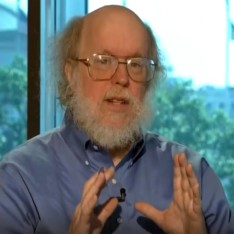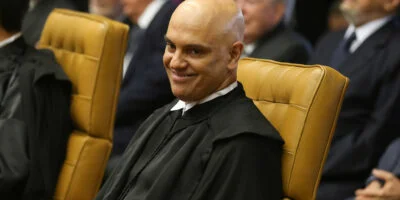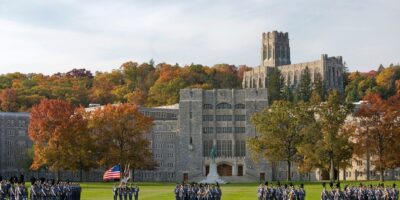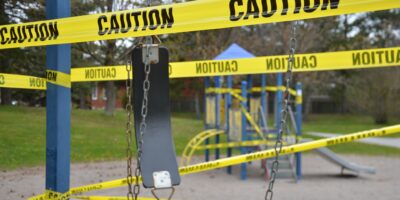The Wreckers of New York and their Bitter Rivalry
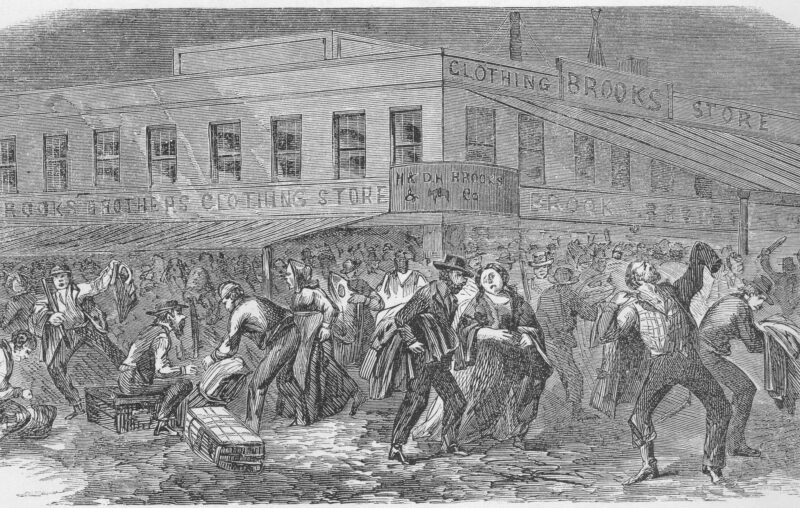
What happens when two masters of political illusion seek to dominate the same turf? New York Governor Andrew Cuomo and New York City Mayor Bill de Blasio have prospered by championing disastrous policies that once assured them sainthood from local and national media. Both New York state and city are increasingly ravished by the two central planners whose power extends far beyond their competence. They are also bitter rivals, despite having similar paths to power and political ambitions.
Both Cuomo and de Blasio used the same federal agency – HUD, the Department of Housing and Urban Development – as a stepping stone to greater political power. As I wrote 21 years ago for the American Spectator, Cuomo was “the Clinton administration’s most megalomaniacal cabinet secretary,” obsessed with “generating favorable publicity for himself and his agency.” Cuomo launched almost a hundred new HUD programs – a fete for an agency widely derided as the most incompetent federal bureaucracy. He created the Community Builders program, a cadre of 800 HUD employees specially recruited and paid up to $100,000 a year to spread the word about HUD’s successes and to illegally lobby on legislation. Sen. Kit Bond (R-MO) derided the program as ” Cuomo’s personal army.” One HUD official declared that the Community Builders were “Democratic ward-heelers who act as a pipeline between Democratic city officials, party leaders, and the administration and the Democratic National Committee.” HUD’s Inspector General warned that Cuomo’s constant reform initiatives have “had a crippling effect on many of HUD’s ongoing operations.”
But none of that mattered to the media – especially after Cuomo exploited perverse liability laws to launch an unwarranted attack on the Second Amendment. Cuomo spearheaded the Clinton administration’s attack on gun makers, threatening that they would perish from “death by a thousand cuts” of all the lawsuits launched against them. HUD was renowned for bankrolling the worst hellholes in many American cities – some housing projects had crime rates 20 times higher than the national average. Serendipitously, Cuomo discovered the guilty party: gun manufacturers. But blaming gun makers for the violence in housing projects was like blaming microphones for the lies that politicians tell.
Smith and Wesson capitulated to federal threats and agreed to sweeping new controls over its gun designs and marketing and new restrictions on gun buyers. Cuomo boasted that the new specifications for firearms will result in “a product that did not exist last week.” A HUD press release on the settlement promised, “Within 12 months, handguns will be designed so they cannot be readily operated by a child under 6.” HUD had previously shown no competence on firearm designs but that didn’t deter Cuomo. However, other gun makers refused to capitulate to Cuomo’s threats. Smith and Wesson was devastated by a consumer backlash and judges threw the Cuomo-spurred lawsuits out of court.
But Cuomo recognized that promising to micromanage people’s lives and safety was still the ticket for national sainthood. Cuomo, who was elected governor in 2010, was determined that New York would be the first state to enact sweeping gun controls after a mass shooting at a school in Newtown, Connecticut. In January 2013, New York legislators and staffers heaved together a bevy of anti-gun provisions which were christened as the Secure Ammunition and Firearms Enforcement Act, the SAFE Act. After the law passed, Cuomo boasted, “You can overpower the extremists with intelligence and with reason and with commonsense and you can make this state a safer state.” But a federal judge later declared that parts of the legislation were “entirely indecipherable,” such as the provision banning firearms features that did not exist. Because Cuomo wanted the mantle of the nation’s toughest anti-gun governor, the SAFE act idiotically decreed that gun owners were permitted to load only seven bullets into ten round magazines. The federal judge nullified that mandate as an “an arbitrary restriction that impermissibly infringes on the rights guaranteed by the Second Amendment.” Most New York gun owners ignored the law’s requirement to register their semi-automatic weapons.
Bill de Blasio also rose to power starting with HUD, working as a regional director under Cuomo. After managing Hillary Clinton’s campaign for the U.S. Senate in 2000, de Blasio was elected to the New York City Council in 2002 and became mayor in 2014. De Blasio’s passion for central planning extends to controlling every classroom for every child in the Big Apple. He sought to impose a new tax on the richest citizens to fund universal pre-kindergarten but Cuomo vetoed the plan. De Blasio then targeted charter schools, seeking to strip an option from parents who wanted to send their kids to schools that weren’t utterly mediocre thanks to the teachers’ union. De Blasio also sought to torpedo programs for gifted students, which he considers discriminatory against minorities who are less likely to qualify. The mayor also believes that educational equity requires radically changing who owns what inside the city. De Blasio proudly quoted a Fox News headline bashing his comments on the need for sweeping reforms: “NYC mayor sees the redistribution of wealth as an important factor toward ending structural racism in education.”
In 2019, de Blasio flogged the same theme, perhaps hoping to propel himself to the Democratic presidential nomination. In his “State of the City” speech, he proclaimed, “Here’s the truth, brothers and sisters, there’s plenty of money in the world. Plenty of money in this city. It’s just in the wrong hands!” The New York Times noted that de Blasio “cast himself as an aspiring Robin Hood — aiming to take from the rich and give to the poor.” But affluent New York City residents are not in the same plight as Russian peasants whose land was seized for Soviet collective farms. At some point, taxation makes flight profitable.
The governor and the mayor have perennially wrangled over who has the right to micromanage New Yorkers’ lives. As early as 2016, a professor at Baruch College declared that their brawling “should be on HBO boxing.” Last Fall, the New Yorker noted the half-decade “running serial of de Blasio-Cuomo pissing contests, some almost comically trivial (a spat over euthanizing a deer in Harlem) and some not funny at all (their posturing over the pitiable state of the housing projects under the jurisdiction of the New York City Housing Authority).”
De Blasio, presuming that his election made him czar of all local transit, sought to cripple Uber’s operations in New York City but Cuomo blocked him. On the flipside, Cuomo was a more zealous regulator of prominent protuberances. “In 2015, Cuomo wanted to clamp down on the growing number of topless women soliciting tourist donations in Times Square with an outright ban, while de Blasio instead set about establishing a task force to get to the root of the issue,” Fox News reported.
The Covid pandemic brought the hostility between the two political kingpins to the boiling point. On March 17, de Blasio suggested he was considering issuing a “shelter in place” decree. Cuomo blocked de Blasio’s effort because “the fear, the panic, is a bigger problem than the virus.” Cuomo also declared, “Rumors are part of the fear, the anxiety. People spread rumors: Maybe we’re going to quarantine New York City? That is not true. … I have no interest whatsoever and no plan whatsoever to quarantine any city.”
Cuomo’s initial instincts were sound – similar to other governors who resisted cascading demands to place everyone under house arrest.
But on March 20, Cuomo congratulated himself for dictating a statewide lockdown: “I want to be able to say to the people of New York — I did everything we could do. And if everything we do saves just one life, I’ll be happy.” Sacrificing the freedom of 20 million people was a small price to pay for permitting the governor to brag about saving one life. Upstate counties had only a smattering of Covid cases at the time that Cuomo shut down their businesses and schools but a statewide lockdown assured him far more applause from the national media. Cuomo’s daily press conferences on fighting Covid earned him an Emmy Award for his “masterful use of television.” But his mandate forcing nursing homes to admit Covid-infected patients, leading to more than 12,000 deaths, earned him a federal investigation.
Restaurants were caught in the crossfire of chaotic and ever-changing decrees from both the mayor and the governor. On March 11, de Blasio declared that “If you’re not sick, you should be going about your life,” including eating out in restaurants. De Blasio stressed that the Covid “does not transmit through food and drink.”
Two days later, de Blasio ordered restaurants to operate at only 50% capacity.
On March 15, Cuomo declared during a television interview that he was “aggressively recommending” voluntary shutdowns by businesses: “If you don’t need to be open, don’t be open.” De Blasio announced a shutdown of restaurants that evening and, the next morning, a tweet by Cuomo changed the deadline for the shutdown to that evening.
On July 1, Cuomo announced that he was not permitting indoor dining in restaurants to resume in part because he was displeased with the lack of aggressive enforcement of mandates for masks and social distancing by New York City officials.
In August, Cuomo justified perpetuating tighter restrictions on restaurants in the Big Apple than imposed elsewhere in the state because “we have a much bigger problem in New York City… with a lack of compliance” with the latest regulations. Restaurants were eventually allowed to partially reopen but Cuomo shut them again in December even though New York state contact tracing data showed that “restaurants and bars account for just 1.43 percent of recent known COVID-19 exposures.” Cuomo justified closing down the businesses based on metrics from the “state’s micro-cluster model.”
New York City restaurants were permitted to offer outdoor dining but their customers were prohibited from using the restaurant bathrooms – sparking another brawl between Cuomo and de Blasio before patrons were permitted to hit the john. New York state senator Jessica Ramos complained, “I doubt a restaurant was consulted in drafting these new and absurd guidelines. These confusing and ever-changing rules are pushing our restaurants to close.”
After Cuomo decreed that restaurants could not be open between 10 p.m. and 5 a.m., he was sued in January by a group of 80 Buffalo restaurants who complained: “There is no valid or sound scientific or medical rationale for prohibiting restaurants from operating between the hours of 10:00 p.m. and 5:00 a.m. while allowing supermarkets, malls, and other businesses with large numbers of customers from operating during these hours.”
A group of New York City restaurants filed a $2 billion class action lawsuit against both Cuomo and de Blasio. Unfortunately, because most of the news media had bought into the Covid panic storyline, both politicians were cheered for practically every restriction they dictated.
Both Cuomo and de Blasio favor central planning for public safety, minimizing citizens’ ability to defend their own lives. But they disagree on how much arbitrary power government agents deserve. Cuomo won the Police Benevolent Association’s “Man of the Year” award – one of the ultimate tributes from the New York City police union conferred upon politicians and others that buttress the power of cops. De Blasio repeatedly clashed with the union but was thwarted by state laws that effectively provided secrecy and immunity to policemen who assail private citizens. After New York City was rocked by riots and looting last summer after the death of George Floyd in Minneapolis, Cuomo threatened to “displace the mayor of New York City and bring in the National Guard, and basically take over the mayor’s job” to restore order.
Instead, de Blasio became a left-wing hero for announcing plans to cut a billion dollars from the budget for the police department. His progressive crusade faltered after violent crime exploded in the city: shootings doubled from 2019 with almost 2,000 people gunned down. Murders were up almost 50%. A coalition of 150 business leaders sent a letter to de Blasio last September lamenting, “There is widespread anxiety over public safety, cleanliness and other quality of life issues that are contributing to deteriorating conditions in commercial districts and neighborhoods across the five boroughs.” Neither Cuomo nor de Blasio have responded to the crime surge by admitting that government has no right to continue disarming people it can no longer protect.
“There has been talk, lately, of New York needing a savior, a hero from the political class,” the New Yorker noted last October. Unfortunately, New Yorkers apparently retain faith in central planning of their lives despite the dismal failures at both the mayoral and gubernatorial level. The political profits of demagoguery will perennially trump the calculus of benevolence. The only “savior” worth trusting is the revival of individual freedom and a vast decrease in regulatory restrictions and tax exactions.

